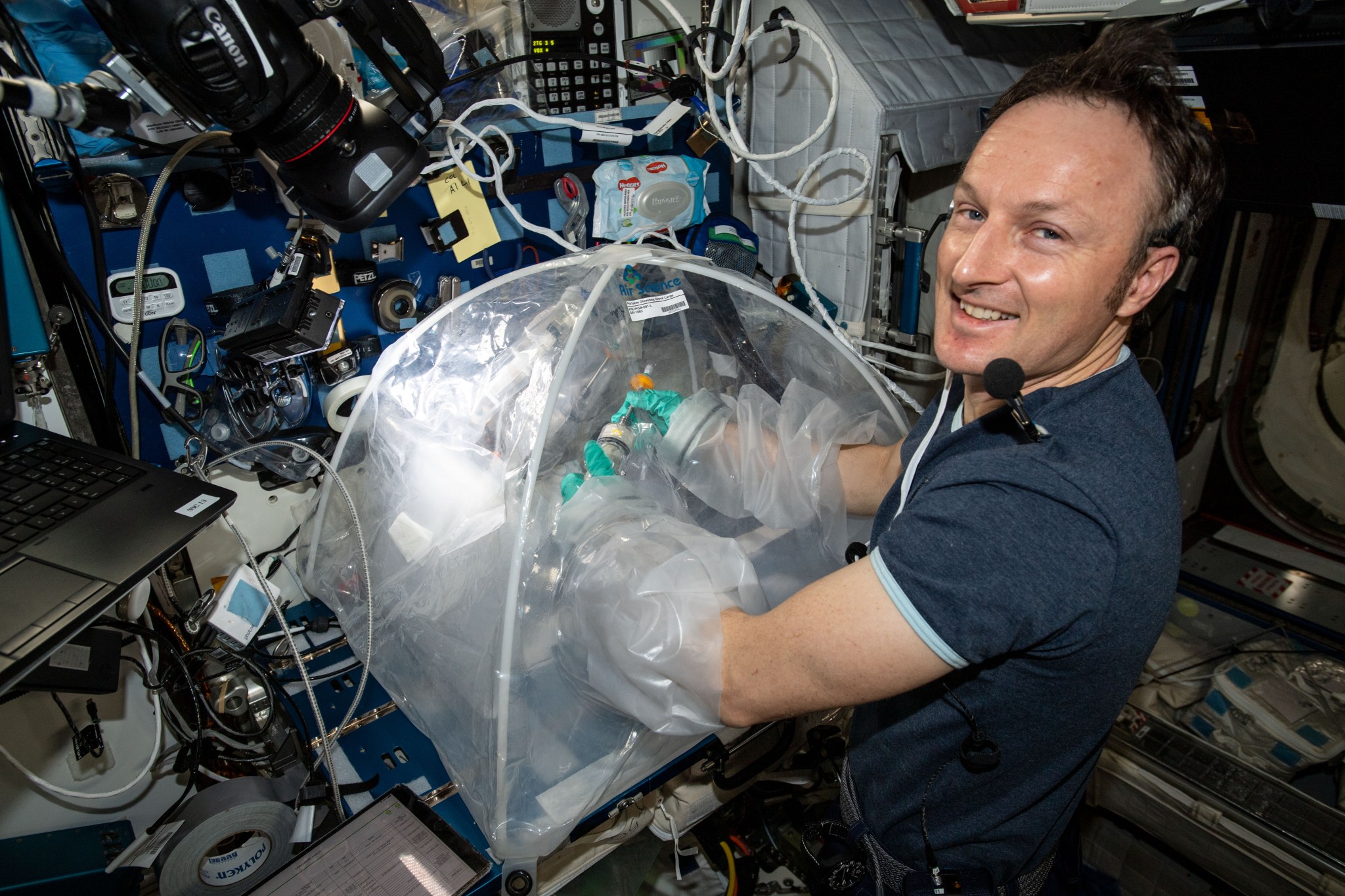Crystallization
Why NASA Studies Crystals
What is crystallization?
Crystallization means taking a material from its liquid or molten form and gradually freezing it until the atoms or molecules are highly organized into a structure known as a crystal. For example, when water freezes, it becomes ice, which is a molecular crystal. Some crystals are a mixture of different kinds of materials.

How does crystallization impact our daily lives?
The world would be a very different place if it wasn’t for crystals. We come in contact with crystals every day—from your coffee cup to your cell phone. Almost all metals, ceramics, and semiconductors are crystals. Silicon is a crystal used to form the “brains” of electronic and computing devices such as microprocessors or memory chips. All computers and cell phones have semiconductor crystals inside of them. Other types of semiconductor crystals can be used as detectors for different optic wavelengths, such as infrared, x-ray, and gamma ray.
Turbine blades, made from metal crystals, are used in the engines of jets.
Lasers, such as the ones used in scanners at the grocery store, are made from optical crystals, which are a type of semiconductor crystal. The Growth of Ternary Compound Semiconductors (GTCS) experiment compares zinc selenide crystals grown in space against the ones grown on Earth. Results could improve high-powered lasers operating in infrared wavelengths by providing insights on how gravity affects the electrical, structural, and optical characteristics of crystals.

Why does NASA study crystals?
Scientists have been trying to optimize crystallization processes for many years. They study different kinds of crystal growth parameters to optimize the specific kind of crystal they want to grow. Optimizing crystal growth can lead to improvements in various fields such as medicine and technology.
Crystals grown on Earth tend to have defects. Little cracks in the crystals can be detrimental to the properties that scientists want to achieve with the crystal. That’s why NASA grows crystals on the International Space Station—in a microgravity environment, where many classes of crystals grow better. Gravity gives rise to convection, which can have negative effects on the quality of the crystal. In a microgravity environment, there’s significantly less convection, which results in crystals of much higher purity. The ISS is used as a laboratory to understand the crystallization process. By learning these processes, they can be applied on Earth.
Learn More:
Crystallization 101: Why NASA studies crystals in space: https://youtu.be/XR1hqp9GR0Q
Space crystals contribute to advancements in technology: https://youtu.be/Arqg1n1jl4Q



























